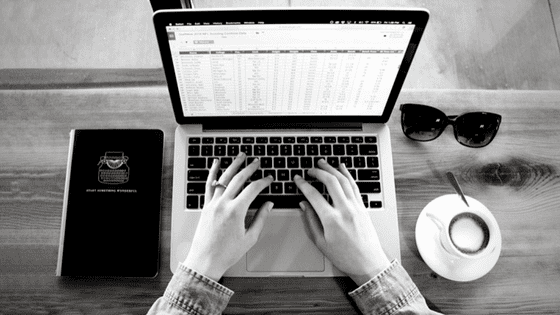The coronavirus pandemic is affecting every aspect of our daily lives, including how we work. According to global research on remote work, conducted by Lenovo in mid-March 2020, the majority of companies have either encouraged (46%) or required (26%) remote work since the COVID-19 pandemic evolved globally.
In fact, a Gartner HR survey revealed that 88 per cent of Australian organisations have encouraged or required employees to work from home due to coronavirus.

As Australia’s workers adapt and settle into the new world of flexible work to mitigate the spread of COVID-19, technology has become a key factor in enabling all of us to keep moving forward.
For some, however, the shift to working from home has been anything but easy, resulting in a decrease in productivity. To provide support for those struggling to remain productive in these disruptive times and new work settings, here are some tips on how to use technology to make working from home as easy and effective as possible:
- Stay flexible and connected, with portable technology
Having the right infrastructure in place is key to ensuring a successful flexible work set-up. Businesses can keep up productivity and collaboration among their teams if they empower remote workers with the appropriate technology solutions.
When it comes to pinpointing the right laptop, employees who are active, like to work flexibly, are always on the go and don’t want to be tied to their desks should prioritise new form-factors and easily portable laptops and mobile workstations. With portable devices, no one has to sit in a “home office” base throughout the entire day – there is flexibility to move around the house, be it to the couch or patio.
Ideally, these laptops or mobile workstations should also take away the worries of insufficient battery life, and provide more battery usage than before.
Alternatively, invest in desktop peripherals with a portable set-up, like tablets.This is especially useful for those who work on-the go or like to move about. For example, a tablet can become a portable laptop when paired with a detachable keyboard, and provide a light and compact workstation which enhances productivity no matter where you work.
A monitor is also a great productivity tool in the office and at home, and a must-have for some. Those who are used to the two-monitor set-up at work should consider duplicating this at home, if they are used to having both a laptop and a larger monitor.
- Leverage productivity and collaboration tools
For many remote workers communication can be the biggest challenge, but video conferencing and digital collaboration tools for communication provide simple solutions to help teams stay connected when working apart.
Video is key to the remote working environment, as it enables employees to feel connected and avoid that feeling of isolation typically reported when working from home. It’s important that companies make sure their employees are armed with the ability to use the best video-conferencing technology. The latest laptops, desktops and workstations on the market will have enhanced video and audio features that provide microphones for 360° reception and a 4-meter far-field performance.
Working remotely does not mean losing visibility among colleagues or becoming isolated, given we now have collaboration tools such as Microsoft Teams, Skype or Zoom. A new survey from Asana revealed Australian workers are quickly embracing collaboration tools in the current crisis, with 64% of Australian workers relying on collaboration tools more since transitioning to remote work – the second highest of all countries surveyed after Germany.
Take that five minutes to chat with someone with whom you haven’t connected in a while — it can shift your entire mood or workflow for the better. Some employees are even utilizing their company’s video-conferencing solutions to grab a virtual lunch together. The right technology provides not just productivity, but personal connectivity.
- Encourage flexible work schedules
As COVID-19 impacts childcare and other services, Australian workers are currently juggling work and home responsibilities in new and challenging ways. To manage remote work within your own household and avoid things from getting chaotic, try to maintain as much structure as possible by creating a new, regular routine.
If you need to, make sure to communicate clearly to let your family know it’s work time. Starting and ending work at the same time each day can help with clearly delineating professional and personal time. At the same time, be understanding towards your other household members who are working from home too. Sometimes, an extra pair of noise-cancelling headphones could come in handy.
Avoid distractions like TV — set clear boundaries for yourself and stick to your daily schedule. And don’t forget to prioritise your own wellbeing: According to a Qualtrics study, 22% of survey takers reported that making time to engage in regular exercise has also been beneficial for balancing out the new WFH life, so make sure to schedule some ‘me-time’.
- Communicate often as this might be the new norm
For managers, remote work poses significant challenges when it comes to ensuring that teams are feeling connected and happy. If a majority of employees need to work from home, there will naturally be some uncertainty among employees as to how well normal business operations will be. Clear and open communication is vital during these transitional periods, and a growing number of companies are organising informal regroups to discuss their daily priorities and work.
As we move forward, company policies are evolving and will continue to do so. The many uncertainties presented by COVID-19 challenge businesses to embrace disruption and find new ways of working while remote. Will this pandemic create a future where remote work will be more of the norm than it is today? There is a sense this situation might usher in more permanent change. According to Lenovo’s global research, 77% of employees feel that companies will be more open to or even encourage letting workers work remotely once we get through this period.
The employee experience in the workplace was already changing before the pandemic hit. Technology capabilities had already ushered a new global workforce that stays connected in a work-from-anywhere world. According to Gartner, 30% of Australia’s employees worked from home regularly before the pandemic, but this number has been increasing steadily for years. The situation we are in right now is only confirming that the investment employers are making in technology right now won’t be wasted as most people feel productive at home and believe that the workforce will move more in this direction after.




















